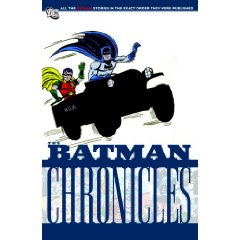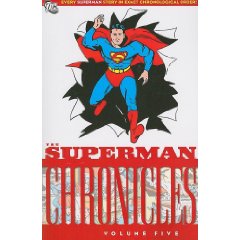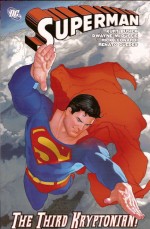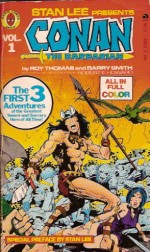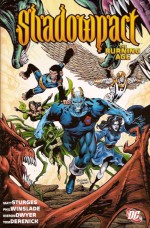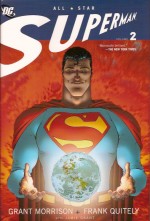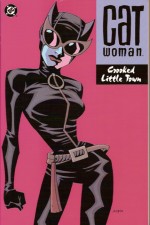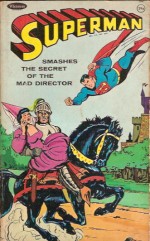
By Keiji Nakazawa (Last Gasp)
ISBN: 978-0-86719-602-3
I first found the Educomics magazine I Saw It! in 1982; initially seduced by the garish cover and the Chester Gould-like illustrations. There was very little translated manga around then, and it was lumped in with the wild, wacky and often salaciously outrageous “Underground Comix” on the racks of my regular comics shop.
I was gobsmacked.
In England we’ve had educational comics for decades, but this was something completely new to me. There was no tasteful distancing here; just an outraged scream of defiance and a direct plea to make things right. This was history and politics – and it was deadly serious, not played for laughs or to make points as British cartooning traditionally did.
I Saw It! became Barefoot Gen, constantly revised and refined, and now the entire semi-autobiographical saga is being remastered in an unabridged ten volume English translation by Last Gasp under the auspices of Project Gen, a multinational organisation dedicated to peace and the abolition of nuclear weapons.
Hadashi no Gen originally began in 1973, serialised in ShÅ«kan ShÅnen Jampu (Weekly Boys Jump) after an occasional series of single stories in 1972 including Kuroi Ame ni Utarete (Struck by Black Rain) and Aru Hi Totsuzen, (One Day, Suddenly) in various magazines. These led Shonen’s editor Tadasu Nagano to commission the 45 page Ore wa Mita (I Saw It) for a Monthly Jump special devoted to autobiographical works. Nagano realised that the author – an actual survivor of the first Atomic Bombing – had much more to say and commissioned the serial which has grown into this stunning epic.
The tale was always controversial in a country that too often prefers to ignore rather than confront its mistakes and indiscretions, and after 18 months Hadashi no Gen was removed from Jump transferring first to Shimin (Citizen), Bunka HyÅron (Cultural Criticism), and KyÅiku HyÅron (Educational Criticism). Like his indomitable hero Keiji Nakazawa never gave up and his persistence led to the first Japanese book collection in 1975, translated by the first Project Gen into English, and many other languages including Norwegian, French German, Italian, Portuguese Swedish, Finnish, Indonesian, Tagalog and Esperanto. He completed the tale in 1985 and his dark chronicle has been adapted into three live action films (from 1976 to 1980), 2 anime films, (1983 and 1987) and in 2007, a 2-part live action television drama.
The unabridged first book A Cartoon Story of Hiroshima introduces six year old Gen Nakaoka in a small allotment, cultivating wheat with his father, an artist whose anti-war sentiment has made life even more difficult for his family. Hiroshima is starving, with American air-raids a constant hazard and rabid patriotic militarists urging the weary populace to greater and greater sacrifice. Every one is constantly reminded that their greatest honour would be to die for the Emperor. I almost expected Darkseid to pop up at any moment…
Gen is the third of five children; Koji and Akira, are his older brothers, his sister Eiko and brother Shinji are younger. His beloved, devoted mother is heavily pregnant. It is a desperate time. Neighbours spy on neighbours, secret police skulk everywhere, criminals and police confiscate all the food and everywhere the militarists scream that total victory for Japan is only a few days away…
Spring 1945: Hunger is everywhere. The bitter realist Papa Nakaoka is increasingly unable to suppress his anger at the greedy warmongers who have brought Japan to the edge of ruin. His open dissent turns his neighbours and friends against the family. They are all labelled traitors for his beliefs, shunned and cheated. Akira is evacuated to the countryside, Koji forced to join the ranks of the Kamikaze, but for pregnant Kimie and her youngest children the stress is unrelenting and inescapable…
Gen’s father is a complex figure – often regarded by critics as a pacifist, though he is far from that. He is however a totally honest man with a warrior’s heart and a true descendent of an honourable warrior culture. Arrested, beaten, maligned, he is unwavering in his fierce belief that the war is wrong, instigated by greedy men to line their own pockets. He always fights for what he knows is right and even as he is beaten by the police he tells his sons “When you know something’s right, don’t give it up…”
His other lesson becomes a major metaphor and visual theme of the series “Be like wheat that sprouts in the dead of winter and gets trampled over and over, but grows straight and tall and bears good fruit”.
The level of domestic violence – and indeed casual social and cultural violence – is apt to cause some modern readers a little concern. Papa Nakaoka is a “hands-on” father, always quick to physically chastise his children, and Gen himself develops into a boy all too ready to solve problems with his fists, but that the family loves deeply and is loved in return is never in doubt – you will just have to steel yourself for a tale about and prominently displaying lots of “tough love”.
There’s a great resemblance to the best of Charles Dickens in Barefoot Gen, especially Oliver Twist and Nicholas Nickleby, but as the human travails of Gen and his family mount there’s no human face of evil; only a ghastly clock counting down. We all know what’s coming even if they don’t and a repeating motif of a circle sun – more often dark than light – keeps that dread tension and foreknowledge of an utterly abhuman crisis solidly in focus.
Monday August 6th 1945 dawns bright and clear. Gen is celebrating a rare personal victory as little Shinji plays with a hard-won toy. There’s a flash of light in the sky…
Much has been written about the effects of the bomb and the incredible, matter-of-fact, nightmarish way Nakazawa has captured them. They’re all true. The depiction of the atomic aftermath and its immediate effects upon the survivors – although I hesitate to use such a hopeful term – are truly ghastly, and a testament to the power of the artist’s understated drawing talent. But this is a book about overcoming the impossible and to understand Gen’s achievement and victory, one has to see the face of his foe.
As the firestorm engulfs the city the miraculously unscathed boy rushes home. The structure has collapsed upon itself, trapping Papa, Eiko and Shinji. Despite his and mother’s efforts they can’t be extricated and no one will help. Mother and child watch helplessly as the family burns to death and the trauma induces labour. Amidst the flames Gen delivers his sister into a world of pain and horror…
Polemical, strident and unrelenting, A Cartoon Story of Hiroshima is also a great piece of craft: graphic narrative at its most effective and powerful. Gen is a flawed but likable hero, big-hearted and trustworthy, a source of cathartic laughter of the best slapstick kind, and a beacon of tragedy, hope and (im)patient understanding.
Although undoubtedly overshadowed by the strength and effect of its message, it’s also a compelling read as a drama, supremely informative and entertaining, memorably beguiling. Please read it. Read all of the series.
It might make you sick: it should. It’s meant to. Read it anyway. And when you think they’re ready, show it to your children. “Those who do not learn from history…”
© 2008 Keiji Nakazawa. All Rights Reserved.
